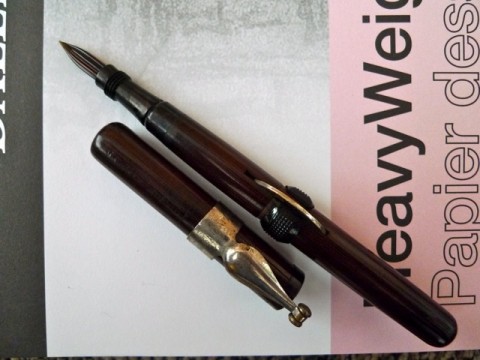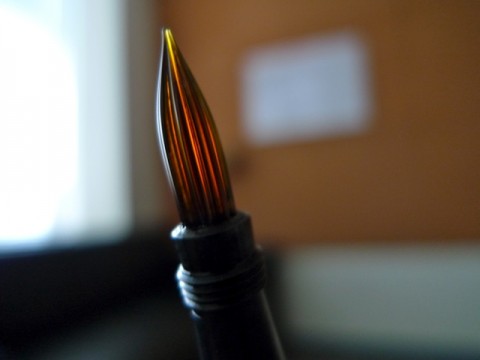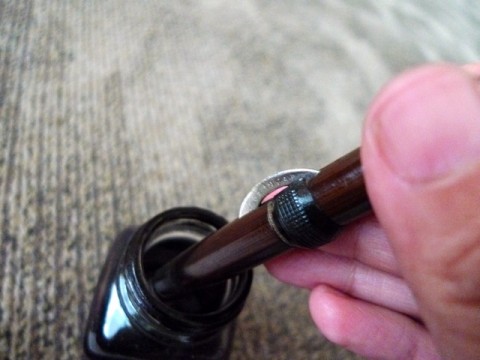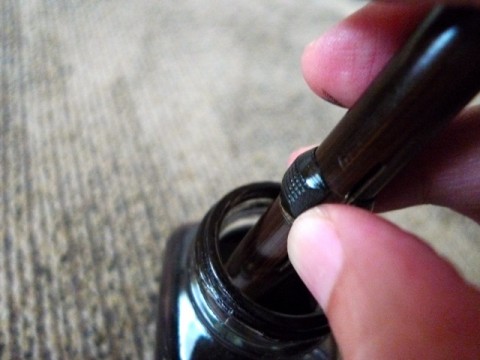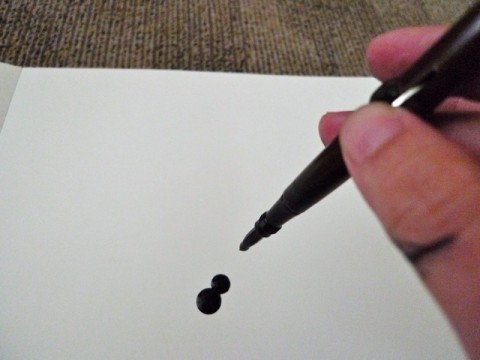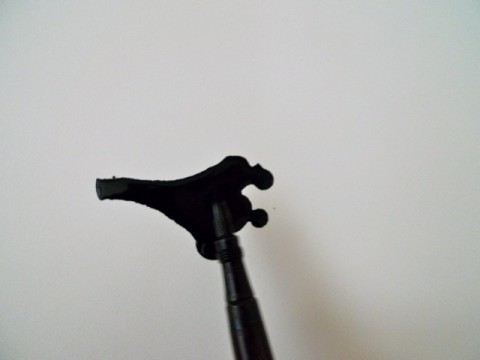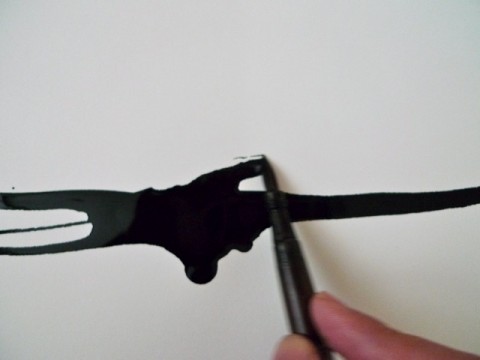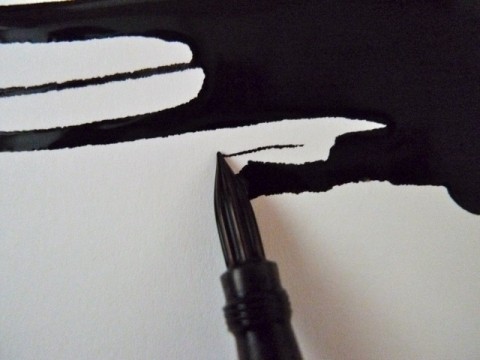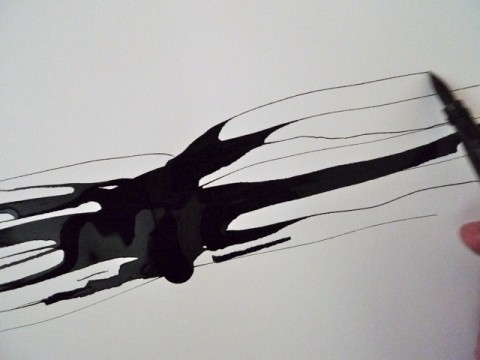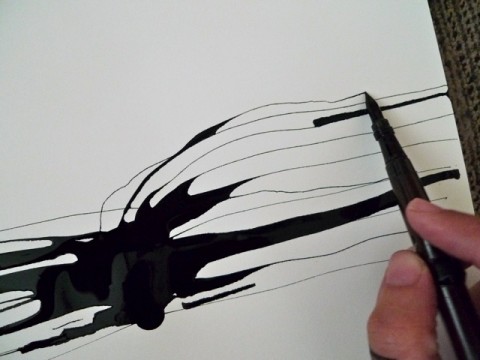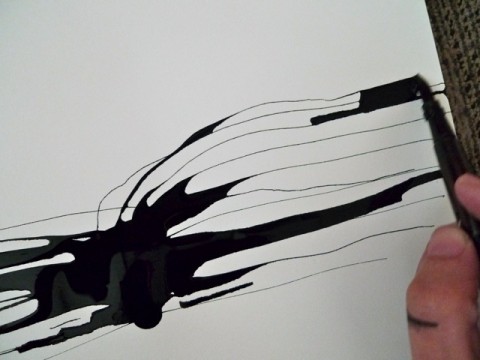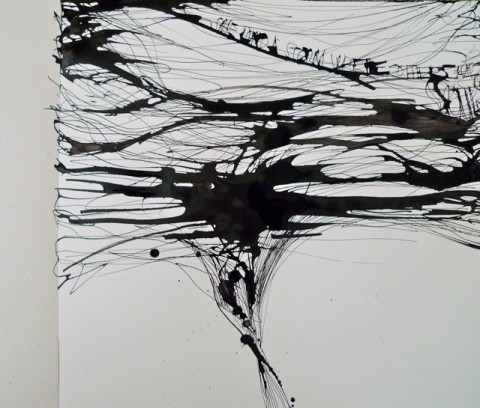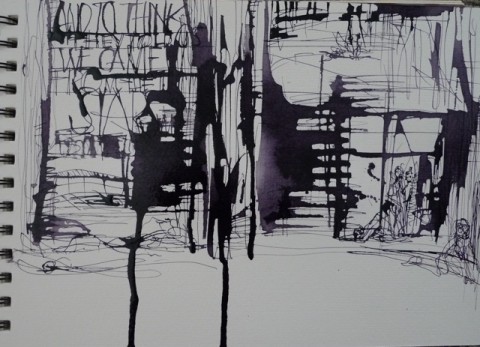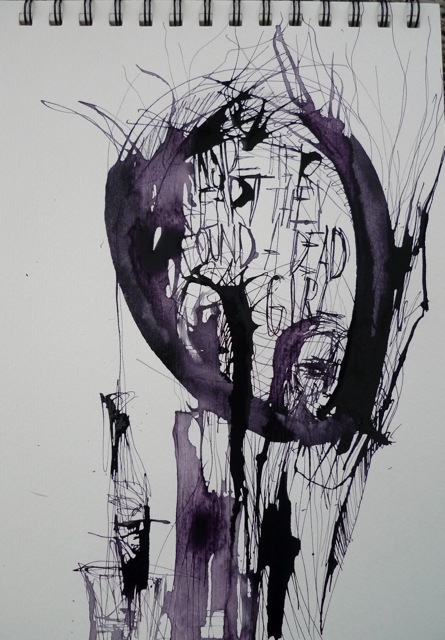Pens with glass nibs were popular during the war, because all metal went to the war effort. Today’s glass pens are all dip pens. The wartime ones had bodies made of cheap, cheerful material, and crescent or lever-filling systems.
I love drawing with my Spors. The glass tip produces fine lines when used normally, and wide swathes of ink when laid on its side and swept across the paper. I don’t know if anyone else draws this way, but I also integrate the crescent filler into my drawing style.
The nib itself is swirled amber glass. Â The grooves allow the controlled travel of ink from the sac to the tip. I’ve seen vintage nibs like these on eBay.
Pressing down the crescent and releasing it while the nib is submerged in ink fills the pen.
If you were to use this pen the usual way, you would turn the band so that the crescent won’t accidentally be depressed while you wrote, releasing a gush of ink. However, I don’t lock the crescent when I draw. I press the crescent as I draw to release more ink onto the paper.
This is not for fans of careful drawing. This is for lovers of accidents.
Held almost flat to the paper, the glass nib can now be used almost like a spatula to push the ink around.
Dragging at this angle can make both a narrow and a wide line at the same time.
The glass nib is capable of very fine lines.
Changing the angle of the nib mid-stroke changes the line completely. See how it abruptly changes from fine to wide.
I don’t start with a clear idea in my head of what a drawing will be. This technique works because I am surprised into a realization of what I’m drawing while I draw. What emerged was a contained tornado. The line “she had a storm where others had souls” came along with the drawing.
Here are two other experiments in this style, using a mix of Duke Black, Noodler’s Singapore Sepia and glycerin.
And to think they told us we came from the stars:
And inside her heart they found a dead girl:
